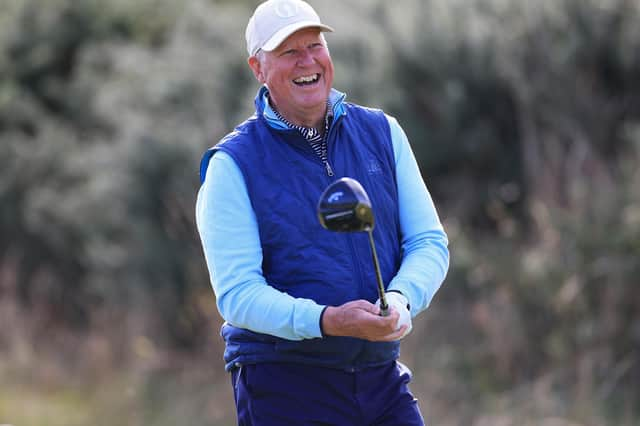New golf ball tests agreed by R&A and US chiefs on the way in 2028


The two governing bodies are updating testing for golf balls’ conformance with their overall distance standard for the first time since 2004 and those changes will come into effect four years from next month.
They’re intended to reverse the ongoing increase in hitting distances being seen worldwide.
Advertisement
Hide AdAdvertisement
Hide AdThe revised test conditions will be for 125mph clubhead speed, spin rate of 2,220rpm and launch angle of 11 degrees, as opposed to the current 120mph, 2,520rpm and ten-degree angle.
They’re based on studies of data from worldwide tours and the game in general over several years and are intended to ensure that the distance standard, to remain unchanged at 317 yards with a three-yard tolerance, continues to represent the ability of the game’s longest hitters.
Analysis of ball speeds among golf’s longest hitters this year reveals that the fastest ten players managed an average ball speed of 186mph, with the very fastest averaging 190mph.
The new testing speeds are expected to lead to a reduction of up to 15 yards in drive distance, with professional tour and elite male players such as Fife’s Connor Syme and Calum Hill seeing drives falling up to 11 yards shorter.
Advertisement
Hide AdAdvertisement
Hide AdRecreational golfers aren’t expected to notice much of a difference, with their drive distances anticipated to be cut by less than five yards.
Existing balls approved for conformance in 2027 can continue to be used by recreational golfers until January 2030 to give players, manufacturers and retailers time to adjust to the changes.
Almost a third of all golf ball models currently on the market are expected to comply with the new set-up.
R&A chief executive officer Martin Slumbers said: “We are convinced that this decision is one of the key ways of achieving a sustainable future for golf, protecting the integrity of the game and meeting our environmental responsibilities.
Advertisement
Hide AdAdvertisement
Hide Ad“The measure we are taking has been carefully considered and calibrated while maintaining the one-game ethos deemed to be so important to the golf industry.
“Importantly, it also keeps the impact on recreational golfers to an absolute minimum.
“We are acting now because we want to ensure that future generations can enjoy the unique challenge of golf as much as we do.”Mike Whan, CEO of the USGA, added: “Governance is hard, and while thousands will claim that we did too much, there will be just as many who said we didn’t do enough to protect the game long term, but from the very beginning, we’ve been driven to do what is right for the game without bias.
“Doing nothing is not an option and we would be failing in our responsibility to protect the game’s future if we didn’t take appropriate action now.”The overall distance standard was introduced in 1976 and updated in 1980, 2002 and 2004.
Further details can be found at www.randa.org/distance-insights